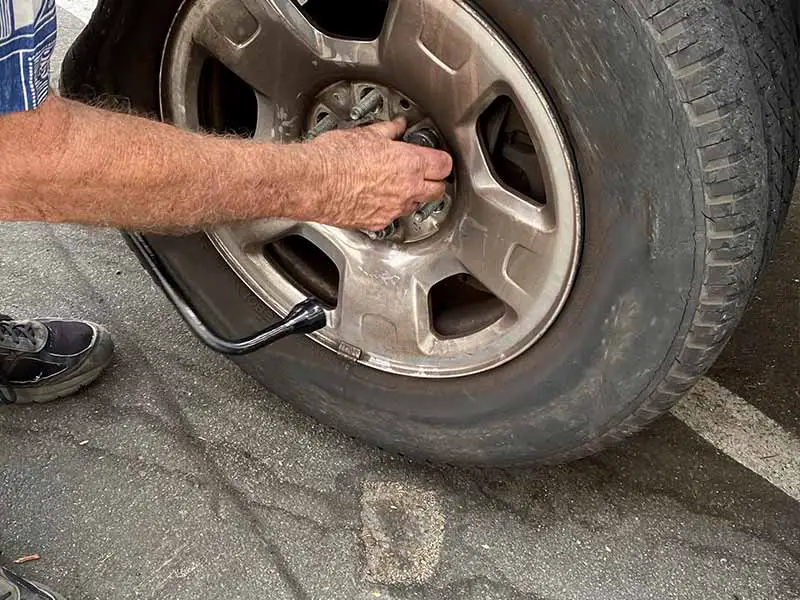Have you ever found yourself stuck on the side of the road with a flat tire, wondering how long it’s going to take you to change it? Or maybe you’re just curious about how long you’ll be sitting in the waiting room while you’re having the tires changed on your car or truck.
How Long Does It Take To Change A Tire?
On average, changing a tire can take anywhere from 15 to 30 minutes per tire if you’re doing it yourself. If you’re getting it changed at a professional service, it could take around the same time, but possibly less depending on their equipment and staff.
In this article, we’ll explore how long it takes to change a tire, whether you’re doing it yourself or taking it to a professional service. We’ll break down the steps involved, consider how many tires you’re changing, and discuss various factors that can influence the time it takes. We’ll also answer some frequently asked questions about costs and tire replacement strategies.
Let’s take a closer look.

What You Need To Change A Tire
Alright, gear up because we’re about to dive into the toolbox. If you’re going to change a tire, there are a few things you’ll absolutely need to have on hand. So, let’s get rolling!
The Essentials: Your Tire Change Toolkit
- Spare Tire: The hero of the day! Without it, there isn’t much of a point in changing a tire. Make sure it’s properly inflated and ready to roll.
- Car Jack: This is your muscle. The jack lifts your vehicle off the ground so you can remove the flat tire and put on the spare. There are a few types of jacks, like the scissor jack (which you turn like a crank) and the hydraulic jack (you pump this one). Different jacks may take different amounts of time to lift your car, but they all do the job.
- Lug Wrench: This handy tool helps you remove the lug nuts from your tire. It usually has a cross shape, giving you more leverage. Remember, “righty tighty, lefty loosey” when using this one!
- Jack Stands (Optional but Helpful): If you want an extra layer of safety, jack stands come into play after you’ve lifted the car with the jack. They support your car and keep it stable while you’re changing the tire. They’re especially useful when changing more than one tire.
Extra Items That Can Come In Handy
- Wheel Wedges: These prevent your car from moving while you’re working on it. They can be placed in front of or behind the wheels that aren’t being lifted.
- Gloves: Changing a tire can be a messy job, so gloves will protect your hands and make it easier to grip tools.
- Flashlight: If you’re ever stuck changing a tire at night, a flashlight can be a real lifesaver.
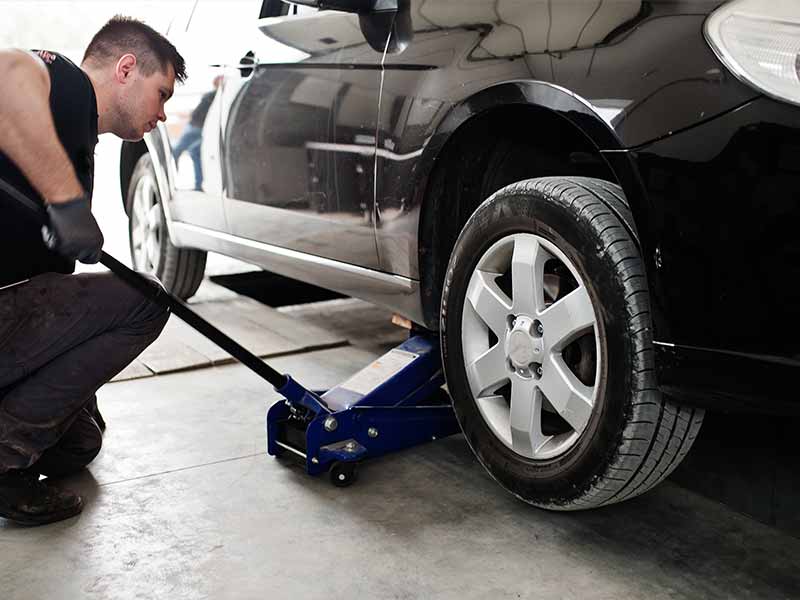
Step-by-Step Guide to Changing A Tire
Alright, it’s time to get down to the nitty-gritty. Let’s take a look at how you can change a tire, step by step. And remember, take it easy. No one’s timing you (unless you’re in a pit crew, and if so, you’re reading the wrong article).
Changing a Tire with a Jack
- Safety First: Park your car on a level surface, engage the parking brake, and use wheel wedges if you have them.
- Lug Nut Loosening: Use your trusty lug wrench to loosen the lug nuts. But don’t take them off just yet!
- Jack it Up: Position your jack under the car (check your owner’s manual for the correct spot). Start raising the jack until the tire is off the ground.
- Nuts Off: Now you can fully remove the lug nuts.
- Tire Swap: Take off the old tire, put on your spare, and hand-tighten the lug nuts as much as you can.
- Lower the Beast: Slowly lower the car back onto the ground but not all the way. Once the tire is touching the ground, but not bearing the full weight of the car, tighten those lug nuts as much as you can using the lug wrench.
- All the Way Down: Lower the car the rest of the way, then give the lug nuts another tighten for good measure.
- Check Everything: Make sure all lug nuts are tight, then check the tire pressure in your spare. If it’s low, fill it up ASAP!
Changing a Tire with Jack Stands
The steps are pretty much the same, but with one big difference. After you’ve jacked up the car, you’re going to slide those jack stands underneath for a bit of added safety. They help keep the car stable and give you peace of mind. If you’re changing more than one tire, these are almost a must.
Changing a Tire with a Lift
If you have access to a car lift (lucky you!), the process becomes a whole lot easier. You can raise the entire vehicle off the ground at once, making it super easy to change as many tires as you need. The rest of the steps remain the same – loosening and removing lug nuts, swapping the tires, and then making sure everything’s tightened up.
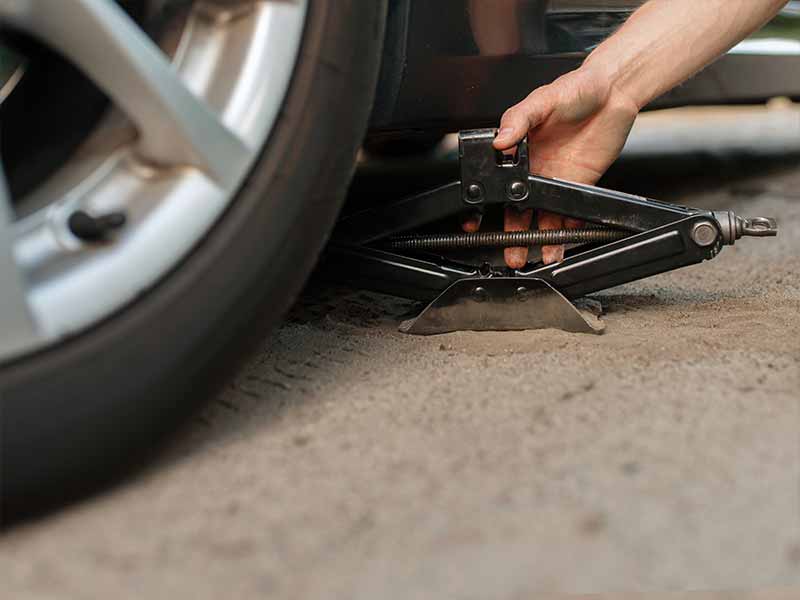
Changing Tires By Yourself
Feeling confident and ready to tackle the task on your own? Great! Let’s talk about what you can expect when you’re changing tires by yourself. It might seem like a daunting task at first, but with a bit of know-how and patience, you’ll be just fine.
The Lone Change: One Tire
If you’ve only got one tire to change, the process can typically take anywhere from 15 to 30 minutes. This all depends on how familiar you are with the process and the tools. Don’t rush – take your time to ensure everything is done correctly and safely.
- Step 1: Gather all your tools and ensure you’re parked on a flat, stable surface.
- Step 2: Loosen the lug nuts with your lug wrench, jack up your vehicle, and then fully remove the lug nuts.
- Step 3: Remove the flat tire, replace it with the spare, and tighten the lug nuts as much as you can by hand.
- Step 4: Lower your vehicle until the spare tire touches the ground, but not all the way. Now, tighten the lug nuts even further with your lug wrench.
- Step 5: Lower your vehicle completely, remove the jack, and give those lug nuts one last good tighten.
Double Trouble: Two Tires
Now, what if you’ve got to change two tires? The process will pretty much be the same, but you’re likely looking at a timeframe of 30 to 60 minutes. You’ll follow all the same steps, but you’ll be doing it twice, once for each tire. Make sure you’re lifting the correct side of your vehicle for the tires you’re changing, and never have both sides lifted at the same time.
The Full Swap: Four Tires
If you’re changing all four tires, you’re essentially doing the same process four times in a row. You should be prepared to dedicate 1 to 2 hours to this, but remember, the timing can greatly depend on your familiarity with the process and the tools.

Getting Your Tires Changed at a Shop
Alright, so you’ve decided to leave it to the professionals. Good choice! Tire shops have all the necessary equipment and trained professionals who can change your tires in no time. Let’s dive into what you can expect when you choose this option.
Single Change: One Tire
Having one tire changed at a professional service like Discount Tire, Walmart, or Costco typically takes about 15 to 30 minutes, depending on how busy the shop is. Remember, this time includes not just the change itself, but also the shop’s processes:
- Check-In: You’ll speak with a service advisor who will confirm the work that needs to be done.
- Wait Time: Depending on the shop’s queue, you might have to wait a bit until they can start working on your car.
- Tire Change: The technician will then perform the tire change. This involves removing the old tire, mounting and balancing the new one, and installing it on your vehicle.
- Check-Out: Once the tire change is completed, you’ll need to pay for the service and any parts needed.
The Full Service: Four Tires
When it comes to changing all four tires at a professional service, you should plan to spend about 45 minutes to an hour. That’s because they can lift the entire car and change all the tires at once, which speeds up the process. Keep in mind, though, this timing can vary based on how busy the shop is.
The Perks of Going Pro
Going to a professional service has its perks. You can expect:
- Quality Service: These are trained professionals who know what they’re doing.
- Safety: They have all the right tools to change your tires safely.
- Extra Checks: Many shops will also check your tire pressure, brakes, and even perform a safety inspection while they’re at it.
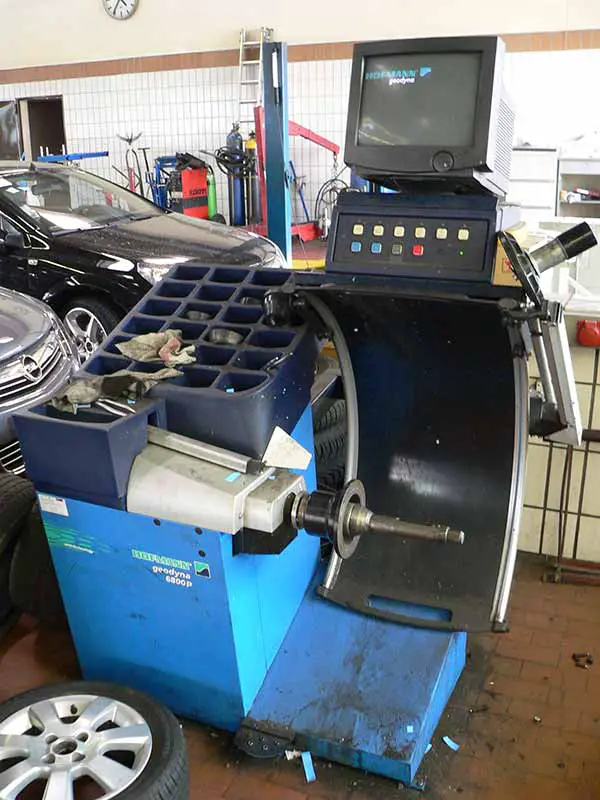
Factors That Influence Tire Change Time
Just like making the perfect sandwich, changing a tire isn’t a one-size-fits-all situation. There are several factors that can influence how long it takes to change a tire. Let’s take a closer look at some of these.
Know-How: Experience Matters
If you’re a tire-changing newbie, it might take you a bit longer than someone who’s been doing it for years. Practice makes perfect, so the more times you do it, the quicker and more efficient you’ll become.
Tools: Choose Wisely
The type of equipment you’re using can also play a big role. Using a small scissor jack and hand tools can take longer than using a hydraulic floor jack and impact wrench. Remember, each tool has its own pros and cons, so choose what’s best for your situation.
The Tire and Vehicle Type: Size Does Matter
The size and type of the tire can also impact the time it takes. Larger, heavier tires found on trucks or SUVs might take longer to change than smaller, lighter tires found on compact cars. Also, some vehicles might have more complex wheel assemblies that require extra steps to remove.
Weather Conditions: Not Always Sunny
If you’re doing it yourself, weather can also play a role. Changing a tire in the rain, snow, or extreme heat can slow you down and make the process more difficult.
The Unexpected: Surprises Happen
And then there’s always the unexpected. A stubborn lug nut that won’t budge or a jack that isn’t working properly can add extra time to the process. Remember, patience is key. If you encounter a problem, take a step back, assess the situation, and then figure out the best solution.
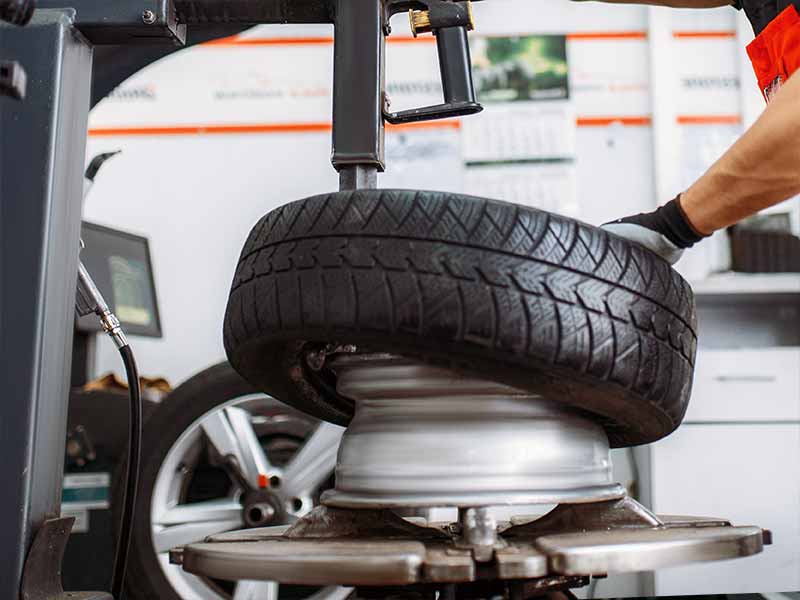
Frequently Asked Questions
Time to tackle some of those burning questions you might have about changing tires. Whether you’re curious about costs or wondering how many tires you should replace, we’ve got you covered.
How Much Does It Cost to Change a Tire?
If you’re changing the tire yourself, the only cost is your time and possibly the price of the new tire, if you don’t already have a spare. If you’re going to a shop, costs can range from $15 to $45 per tire. This can vary depending on your location, the tire shop, and whether any additional services are performed.
How Much Does It Cost for Roadside Assistance to Change a Tire?
The cost for roadside assistance can depend on a few factors, like your location and the type of roadside assistance plan you have. Some plans may offer tire changing as a free service, while others might charge a fee. On average, if you’re paying out-of-pocket without a plan, expect it to cost anywhere from $35 to $100.
How Much Does It Cost to Mount and Balance a Tire?
Mounting and balancing a tire are often included in the cost when you buy new tires. However, if you’re bringing in your own tire to be mounted and balanced, you might pay anywhere from $15 to $50 per tire at a tire shop.
How Much Does One Tire Cost?
The cost of a new tire can vary greatly based on the brand, size, and type of tire. You can find a basic passenger car tire for as little as $50 to $75. However, larger or high-performance tires can cost several hundred dollars each.
What’s A Reasonable Price for Four New Tires?
The cost for four new tires can range anywhere from $200 to $800 for an average passenger car. This includes basic mounting and balancing. However, keep in mind that prices can vary greatly based on the brand, size, and type of tire. High-performance or specialty tires can cost much more.
Should You Replace 1, 2, or 4 Tires?
It really depends on the situation. If only one tire is damaged, you might be able to get away with replacing just that tire. However, it’s often recommended to replace tires in pairs (both front or both rear) to keep the handling balanced. If all of your tires are worn, it’s best to replace all four at the same time. However, always consult with a professional if you’re unsure.
Resources
Below are some links you may find helpful when learning about tires
Final Thoughts
From going solo with a single tire to letting the professionals handle a full set, we’ve covered a lot of ground.
The key takeaway here? Changing a tire isn’t just about speed, but about safety and doing the job right. Whether it takes you 15 minutes or an hour, remember that it’s a valuable skill that can help you out of a tough spot. And whether you’re doing it yourself or heading to a shop, knowing the process can make it all a little less stressful.
Good luck and happy motoring.
